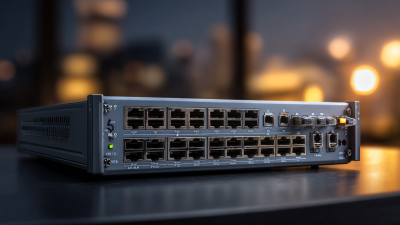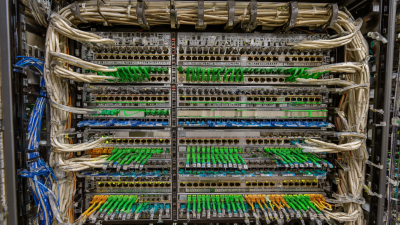In today's digital landscape, network security has become a top priority for organizations striving to protect their sensitive data from increasing cyber threats. The Juniper Enterprise Firewall stands out as a robust solution designed to fortify network defenses through advanced threat detection and mitigation strategies. This guide aims to provide a comprehensive overview of how to achieve maximum network security using the Juniper Enterprise Firewall, exploring key features, best practices, and configuration techniques that can enhance your security posture. By leveraging the capabilities of this powerful firewall, organizations can effectively safeguard their networks against unauthorized access, data breaches, and other malicious activities. As we delve into the essential steps for optimizing your firewall settings, it will become clear that investing in this technology is crucial for maintaining a secure and resilient network infrastructure.

In the pursuit of maximum network security, implementing a robust firewall solution is essential for enterprises. A well-configured firewall not only protects against unauthorized access but also helps in monitoring and managing traffic effectively. According to industry reports, about 70% of businesses experience cyber threats, with firewalls being the primary defense mechanism. For optimal security, enterprises should focus on several strategies when deploying firewalls in their environments.

Tips for Implementation:
By leveraging these strategies, enterprises can effectively utilize their firewall technology, enhancing their overall security posture and safeguarding critical information from potential breaches.
Juniper Enterprise Firewalls offer a robust suite of features designed to enhance network protection and effectively mitigate threats. One key feature is the advanced intrusion prevention system (IPS), which analyzes and blocks potential threats in real-time. By utilizing deep packet inspection, the firewall identifies malicious traffic patterns and responds rapidly to prevent breaches. This proactive approach ensures that organizations can maintain a secure environment, minimizing the risk of data loss and damage.
Another significant aspect of Juniper Firewalls is their integrated threat intelligence capabilities. These systems leverage global threat databases to stay updated on the latest vulnerabilities and attack methods. By correlating data from various sources, these firewalls can adapt their defense mechanisms dynamically. This level of intelligence allows for tailored security policies that address specific organizational needs while remaining agile enough to respond to evolving cyber threats. Such features not only fortify the network perimeter but also enhance overall security posture by enabling organizations to anticipate and mitigate risks effectively.
| Feature | Description | Benefits |
|---|---|---|
| Intrusion Detection and Prevention | Monitors network traffic for suspicious activity and takes action to prevent intrusions. | Proactively protects against attacks by detecting and blocking threats in real-time. |
| Advanced Threat Intelligence | Utilizes up-to-date threat intelligence feeds to identify and mitigate emerging threats. | Enhances the firewall’s ability to respond to new and evolving security threats. |
| Application Awareness | Allows the firewall to understand and control applications based on specific traffic patterns. | Enables more granular control over network traffic and improves security postures. |
| SSL VPN Support | Provides secure remote access to the network via encrypted channels. | Safeguards data transmission for remote workers, ensuring privacy and security. |
| Centralized Management | Facilitates easy configuration, deployment, and monitoring of multiple firewalls from a single interface. | Streamlines operational tasks and improves response times to security incidents. |
 To achieve maximum network security with Juniper Enterprise Firewalls, it is essential to follow established best practices for configuration. First and foremost, it's crucial to implement a layered security approach, integrating firewall rules that restrict unauthorized access while still allowing legitimate traffic. Administrators should regularly review and update these rules as user roles and business needs evolve. Enabling features such as Intrusion Prevention Systems (IPS) and Deep Packet Inspection (DPI) can further enhance the firewall's capability to detect and respond to potential threats in real-time.
To achieve maximum network security with Juniper Enterprise Firewalls, it is essential to follow established best practices for configuration. First and foremost, it's crucial to implement a layered security approach, integrating firewall rules that restrict unauthorized access while still allowing legitimate traffic. Administrators should regularly review and update these rules as user roles and business needs evolve. Enabling features such as Intrusion Prevention Systems (IPS) and Deep Packet Inspection (DPI) can further enhance the firewall's capability to detect and respond to potential threats in real-time.
Another key practice is to establish regular security auditing and monitoring protocols. This includes logging all firewall activities, which helps in identifying any unusual patterns that could indicate a data breach or cyber attack. Additionally, utilizing automation tools to patch and update the firewall firmware can protect against newly discovered vulnerabilities. Training staff on the importance of security measures and how to identify potential threats is also vital, as human error can be a major vulnerability in any network security strategy. By adhering to these best practices, organizations can significantly fortify their defenses and safeguard sensitive information against cyber threats.
In the realm of network security, the importance of regular firmware updates and patch management cannot be overstated. With vulnerabilities such as the CVE-2025-20265 found in prominent firewalls, organizations must prioritize timely updates to mitigate risks. According to industry reports, unpatched vulnerabilities accounted for approximately 90% of successful cyberattacks in recent years. This statistic underscores the urgent need for organizations to adopt a proactive approach to their firewall security.
The recent vulnerabilities disclosed by leading security vendors highlight the criticality of vigilance in managing firewall security. For instance, a high-severity flaw in PAN-OS has raised concerns, making it imperative for users to apply updates promptly. A survey by a well-known cybersecurity firm revealed that roughly 70% of IT departments expressed a lack of confidence in their patch management processes, which directly correlates to an increased risk of exploitation. Establishing a routine for updates and patches is essential not only for maintaining the integrity of firewall solutions but also for safeguarding sensitive data against emerging threats.
Measuring the success of network security implemented through Juniper Enterprise Firewalls is crucial for understanding their effectiveness in protecting organizational data. Key Performance Indicators (KPIs) should be established to evaluate various facets of the firewall's performance, including the number of blocked threats, response time to security incidents, and the volume of legitimate traffic versus malicious attempts. Analyzing these metrics allows organizations to gauge how well the firewall is functioning and to identify areas that may require enhancement or additional resources.
Furthermore, regular audits and assessments can provide deeper insights into the firewall's impact on network performance and security posture. Metrics such as the frequency of updates to security policies and the rate of successful versus failed access attempts contribute to a comprehensive view of the firewall's operational efficacy. Organizations should also consider user feedback and incident response times as qualitative indicators of the firewall's effectiveness. By systematically measuring these KPIs, organizations can ensure they maximize their security investment in Juniper Enterprise Firewalls while continuously improving their defenses against emerging threats.








